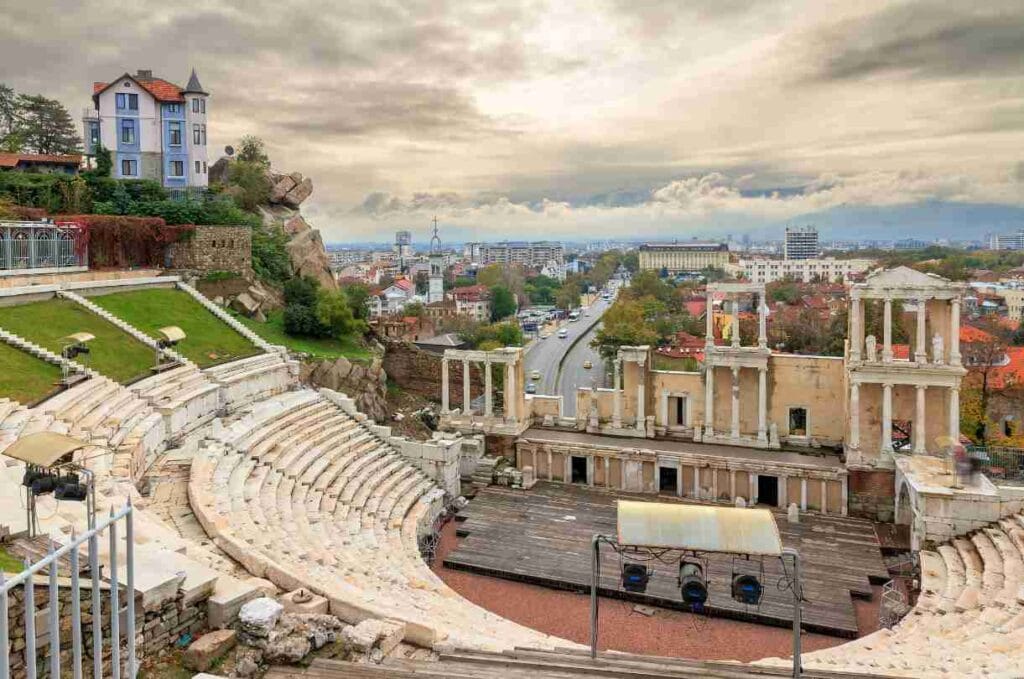Bulgaria is a land full of hidden natural wonders, and one of the most enchanting among them is the Stob Pyramids. Rising like stone castles in the foothills of the Rila Mountains, these sandstone formations attract both curious travelers and seasoned hikers. Located just a few kilometers from the famous Rila Monastery, they are often described as one of the most photogenic and mystical places in the country.
Did you know that the Stob Pyramids stretch for about 40 hectares, with some formations reaching up to 12 meters in height? Their unusual shapes have inspired local folklore, including tales of a cursed wedding turned to stone. Whether you’re into geology, history, or simply love spectacular landscapes, the Stob Pyramids are a must-see destination.
In this guide, we’ll explore everything you need to know – from how they were formed and the legends behind them to practical tips for visiting.
Check my video from Stobsky Piramidi
Maded by Mihail Mihaylov
What Are the Stob Pyramids?
The Stob Pyramids are a group of sandstone and clay rock formations, created by erosion over thousands of years. Rainwater and wind gradually shaped the soft terrain into tall, narrow columns that resemble pyramids, spires, and even castle towers.
Some of the pyramids are topped with stone “caps” – rocks that protect the softer material underneath from erosion, giving them a unique mushroom-like appearance. Locals often compare them to natural sculptures, each one with its own shape and personality.
What makes the Stob Pyramids special is not only their size but also their color palette. Depending on the season and the sunlight, the pyramids can shift from golden yellow to deep red, creating a magical atmosphere that makes photographers fall in love with the place.
History and Legends
Like many natural wonders in Bulgaria, the Stob Pyramids are wrapped in folklore. The most famous legend is the “Stone Wedding.”
According to the story, during a village wedding near Stob, the bride was so beautiful that the groom’s mother cursed her out of jealousy. The curse turned the entire wedding procession into stone – the pyramids you see today are said to be the frozen figures of the bride, groom, and their guests.
Historically, the site has been known for centuries. Travelers and explorers documented the pyramids as early as the 19th century, noting their unusual beauty and connection to Bulgarian folklore. Today, the pyramids are a protected natural landmark (since 1964) and a symbol of the region.
Location and How to Get There
The Stob Pyramids are located near the village of Stob, at the western foot of the Rila Mountains, in Kyustendil Province.
- Distance from Sofia: ~95 km (about 1 hour 30 minutes by car)
- Distance from Blagoevgrad: ~25 km (about 30 minutes by car)
- Distance from Rila Monastery: ~20 km (about 25 minutes by car)
Getting There
- By car: The easiest way is to drive from Sofia via the Struma highway. The village of Stob has a parking area near the trail entrance.
- By bus: Buses from Sofia or Blagoevgrad stop in nearby towns, but reaching the pyramids by public transport is less convenient.
- Guided tours: Many day trips to Rila Monastery also include a stop at the Stob Pyramids, making it an easy two-in-one excursion.
The Hiking Experience
Visiting the Stob Pyramids is not a difficult hike, making it perfect for families and casual travelers.
- Trail length: ~1.2 km one way (about 2.4 km round trip)
- Duration: 30–40 minutes to the top
- Difficulty: Easy to moderate – the path is well-marked, but some sections can be steep
- Elevation gain: ~120 meters
Along the way, you’ll find several viewpoints offering panoramic vistas of the pyramids, the Rila Mountains, and the Struma River valley. At the top, the view is absolutely breathtaking – a landscape of golden spires stretching against the backdrop of Rila’s green slopes.
Travel Tips for Visitors
To make the most of your trip, here are some practical tips:
- Entrance fee: A small fee (around 2–3 BGN per person) is collected at the trail entrance.
- Best time to visit: Spring and autumn offer the most vivid colors, but summer evenings also provide stunning sunsets. Winter visits are possible but less recommended due to icy paths.
- What to bring: Comfortable shoes, water, sunscreen, and of course, a camera!
- Photography tip: The best lighting is in the late afternoon when the sun casts dramatic shadows over the formations.
- Safety: Stay on the marked path. The formations are fragile, and climbing on them is forbidden.
Nearby Attractions
One of the best things about visiting the Stob Pyramids is their proximity to other major attractions.
- Rila Monastery – Just 20 minutes away, this UNESCO World Heritage site is one of the most important cultural and religious landmarks in Bulgaria.
- Rila Mountains – If you’re a hiking enthusiast, the Rila range offers countless trails, including those to the Seven Rila Lakes.
- Blagoevgrad – A vibrant university town with charming pedestrian streets, cafes, and cultural events.
- Traditional villages – Nearby villages such as Stob and Kocherinovo offer a glimpse of authentic Bulgarian rural life and local cuisine.
Conclusion
The Stob Pyramids Bulgaria are more than just an impressive geological phenomenon – they are a place where nature, history, and legend meet. Whether you’re traveling from Sofia, exploring the Rila Monastery, or just looking for a unique short hike, this destination will leave you amazed.
With its breathtaking views, fascinating folklore, and easy access, the Stob Pyramids deserve a spot on every traveler’s Bulgaria itinerary. So, pack your hiking shoes, grab your camera, and get ready to explore one of the country’s most magical natural wonders!



